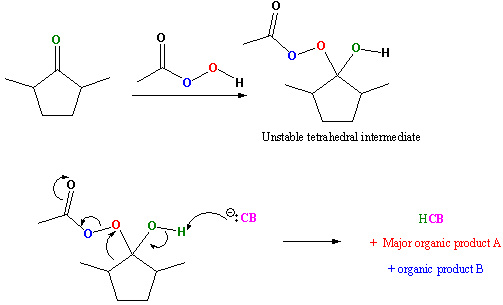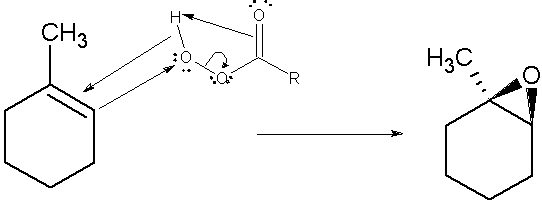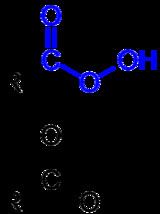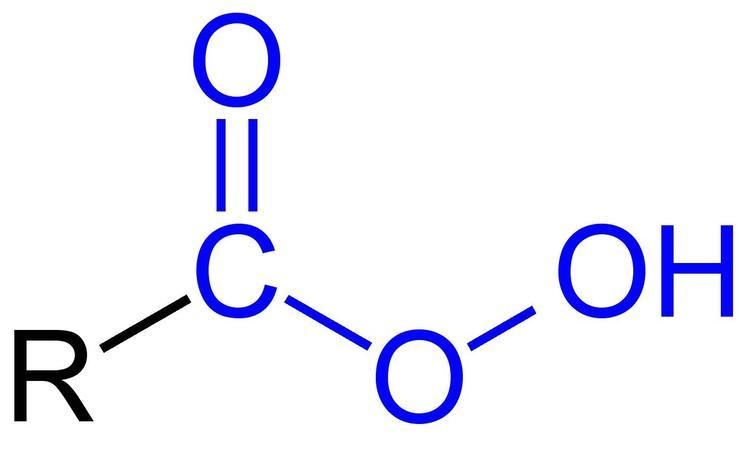 | ||
Alkene epoxidation reaction and mechanism using peroxy acid or mcpba
A peroxy acid (often spelled as one word, peroxyacid, and sometimes called peracid) is an acid which contains an acidic –OOH group. The two main classes are those derived from conventional mineral acids, especially sulfuric acid, and the organic derivatives of carboxylic acids. They are generally strong oxidizers.
Contents
- Alkene epoxidation reaction and mechanism using peroxy acid or mcpba
- Alkene epoxidation reaction mechanism mcpba peroxy acid halohydrin hydrolysis hydroxylation
- Inorganic peroxy acids
- Organic peracids
- Properties and uses
- References

Alkene epoxidation reaction mechanism mcpba peroxy acid halohydrin hydrolysis hydroxylation
Inorganic peroxy acids

Peroxymonosulfuric acid (Caro's acid) is probably the most important inorganic peracid, at least in terms of the scale. It is used for the bleaching of pulp and for the detoxification of cyanide in the mining industry. It is produced by treating sulfuric acid with hydrogen peroxide. Peroxyphosphoric acid (H3PO5) is prepared similarly.
Organic peracids

Several organic peroxyacids are commercially useful. They can be prepared in several ways. Most commonly, peracids are generated by treating the corresponding carboxylic acid with hydrogen peroxide:
RCO2H + H2O2 ⇌ RCO3H + H2OA related reaction involves treatment of the carboxylic anhydride:
(RCO)2O + H2O2 → RCO3H + RCO2H
This method is popular for converting cyclic anhydrides to the corresponding monoperoxyacids, for example monoperoxyphthalic acid.
The third method involves treatment of acid chlorides:
meta-chloroperoxybenzoic acid (mCPBA) is prepared in this way.
Properties and uses

Peroxycarboxylic acids are about 1000× weaker than the parent carboxylic acid, owing the absence of resonance stabilization of the anion. For similar reasons, their pKa values tend also to be relatively insensitive to the substituent R.

The largest use of organic peroxy acids is for the conversion of alkenes to epoxides. Certain cyclic ketones are converted to the ring-expanded esters using peracids in a Baeyer-Villiger oxidation. They are also used for the oxidation of amines and thioethers to amine oxides and sulfoxides. The laboratory applications of the valued reagent mCPBA illustrate these reactions. It is used as a reagent in the Baeyer-Villiger oxidation and in oxidation of carbon-carbon double bonds in alkenes to generate epoxides (oxiranes). Reaction of peroxycarboxylic acids with acid chlorides affords diacyl peroxides:
RC(O)Cl + RC(O)O2H → (RC(O))2O2 + HCl